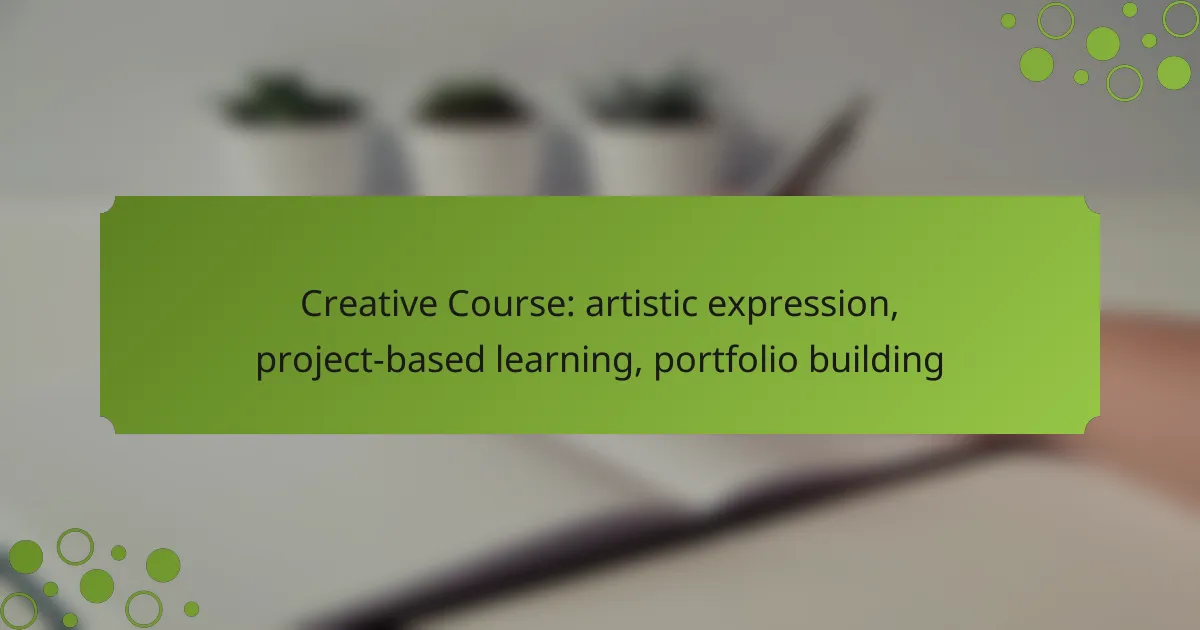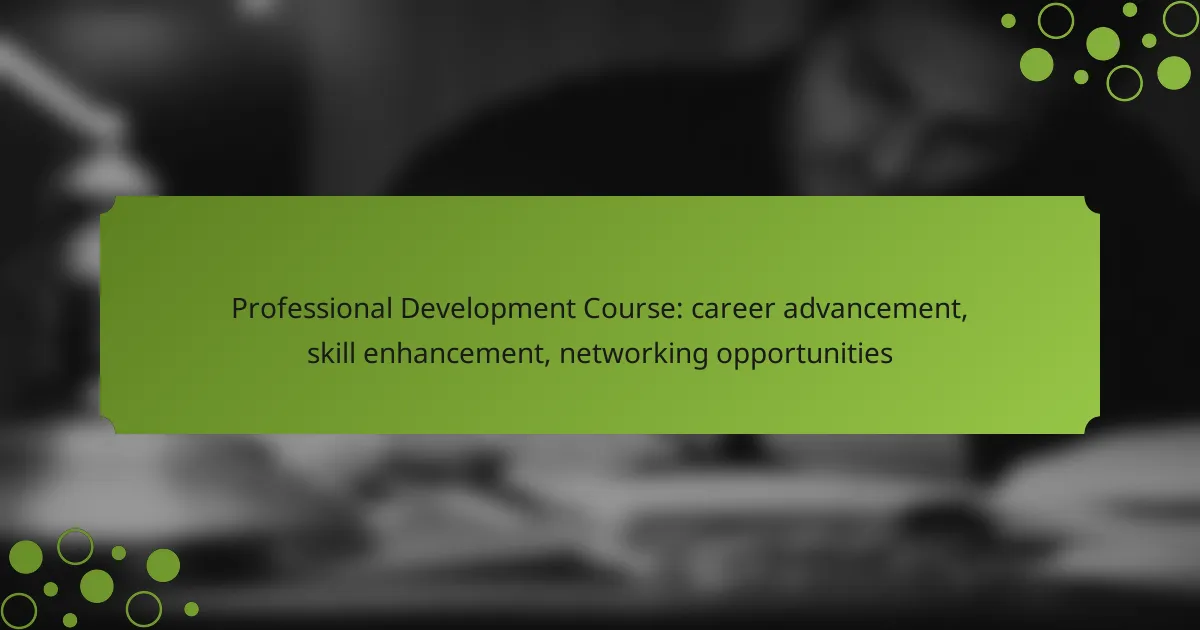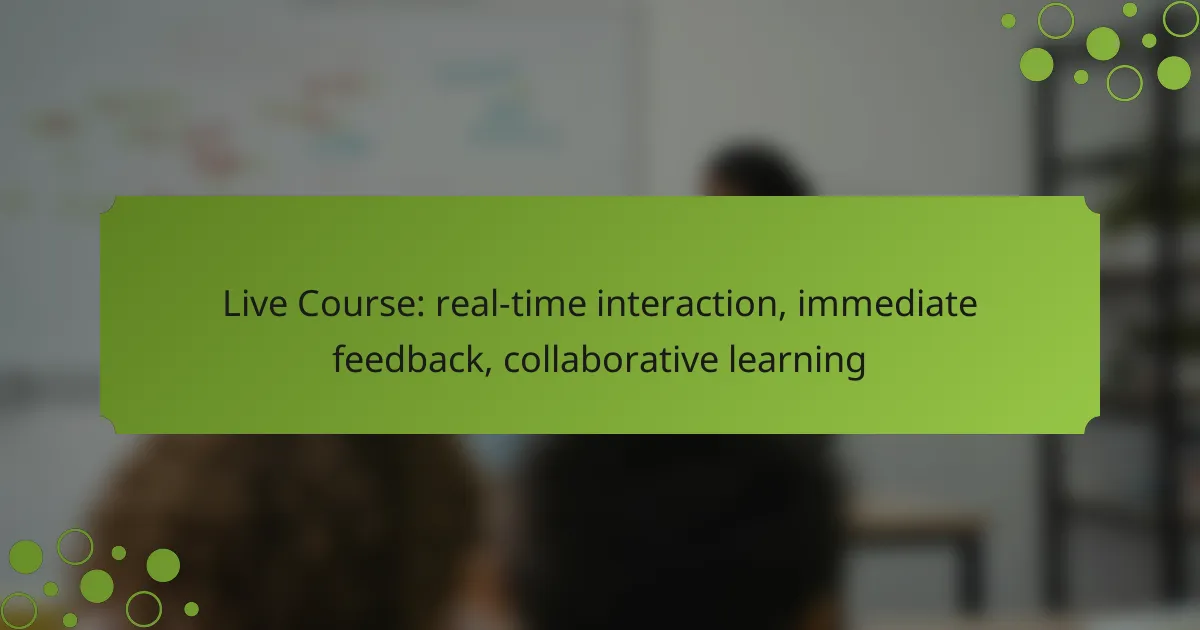Explore the best online courses for creative expression in Canada, where artistic skills meet project-based learning and portfolio building. Platforms like Skillshare, Coursera, and Udemy provide tailored options that foster creativity and enhance your artistic journey. Engaging in hands-on projects not only refines your techniques but also helps you create a compelling portfolio that showcases your growth and attracts potential opportunities.
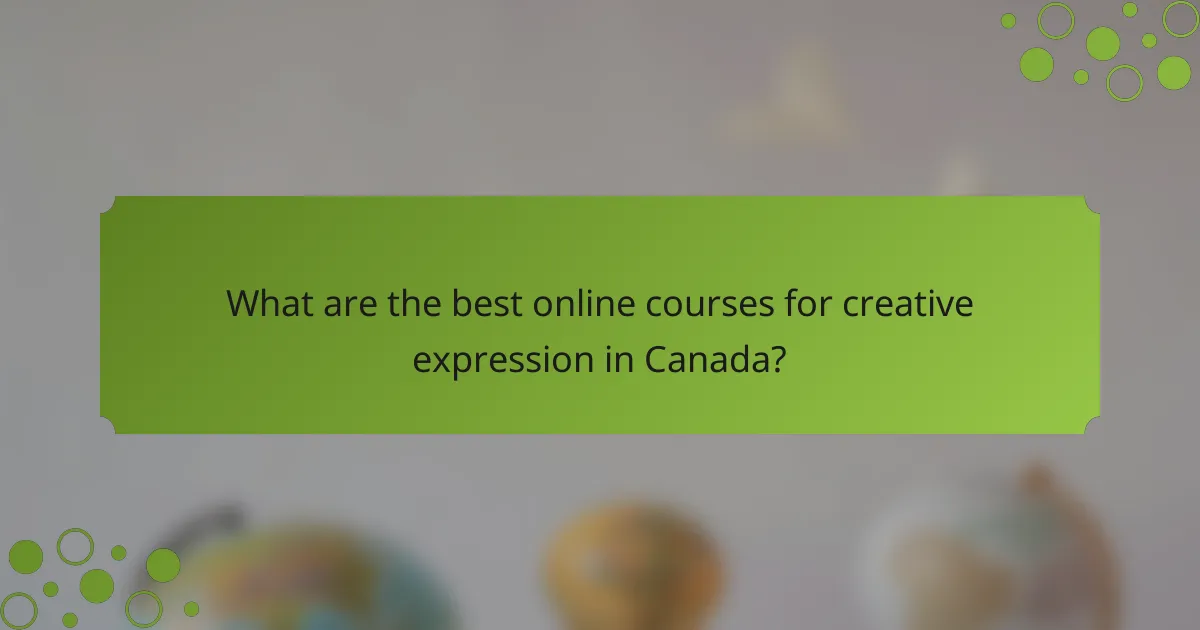
What are the best online courses for creative expression in Canada?
The best online courses for creative expression in Canada focus on artistic skills, project-based learning, and portfolio development. Platforms like Skillshare, Coursera, and Udemy offer diverse options tailored to various interests and skill levels.
Skillshare: Creative Workshops
Skillshare provides a wide range of creative workshops that emphasize hands-on projects. Courses cover topics such as illustration, photography, and graphic design, allowing students to explore their artistic abilities while creating tangible work.
Consider enrolling in classes that align with your interests and skill level. Many workshops are taught by industry professionals, offering insights and practical techniques that can enhance your creative journey.
Coursera: Art and Design Courses
Coursera partners with universities and institutions to offer comprehensive art and design courses. These courses often include video lectures, assignments, and peer feedback, providing a structured learning experience.
Look for programs that focus on specific areas, such as digital art or visual communication. Many courses also offer certificates upon completion, which can be beneficial for building your portfolio and showcasing your skills to potential employers.
Udemy: Portfolio Building Classes
Udemy features a variety of classes dedicated to portfolio building, essential for showcasing your creative work. These courses often guide you through the process of selecting, organizing, and presenting your projects effectively.
When choosing a class, check for reviews and ratings to ensure quality. Practical tips and templates provided in these courses can help you create a professional portfolio that stands out in the competitive creative job market.
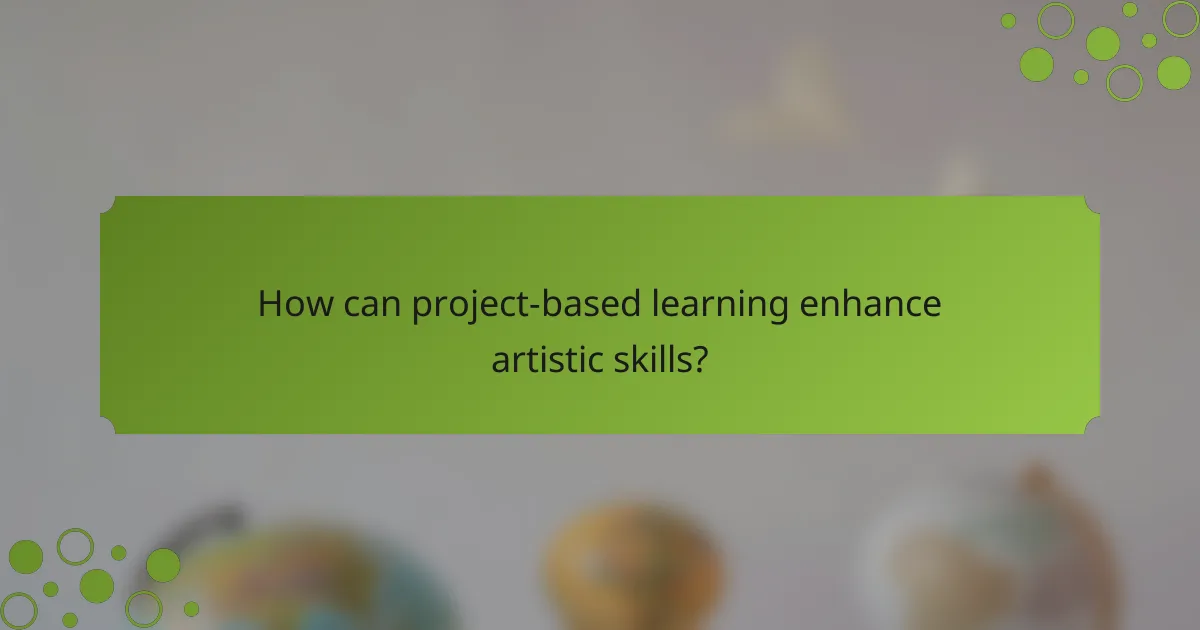
How can project-based learning enhance artistic skills?
Project-based learning enhances artistic skills by providing practical, hands-on experiences that encourage creativity and critical thinking. This approach allows artists to engage deeply with their work, resulting in a more robust portfolio and refined techniques.
Hands-on experience through real projects
Engaging in real projects allows artists to apply theoretical knowledge in practical settings, fostering skill development. For instance, creating a mural or designing a product can help artists understand color theory, composition, and material properties in a tangible way.
Artists should consider starting with small-scale projects that can be completed within a few weeks. This allows for experimentation without overwhelming pressure, enabling them to iterate on their ideas and techniques effectively.
Collaboration with peers for feedback
Collaborating with peers provides valuable feedback that can enhance artistic skills. Sharing work with fellow artists allows for constructive criticism and diverse perspectives, which can lead to improved techniques and innovative ideas.
To maximize the benefits of collaboration, artists should engage in regular critique sessions, whether in person or online. Setting clear guidelines for feedback can help ensure that critiques are constructive and focused, fostering a supportive learning environment.
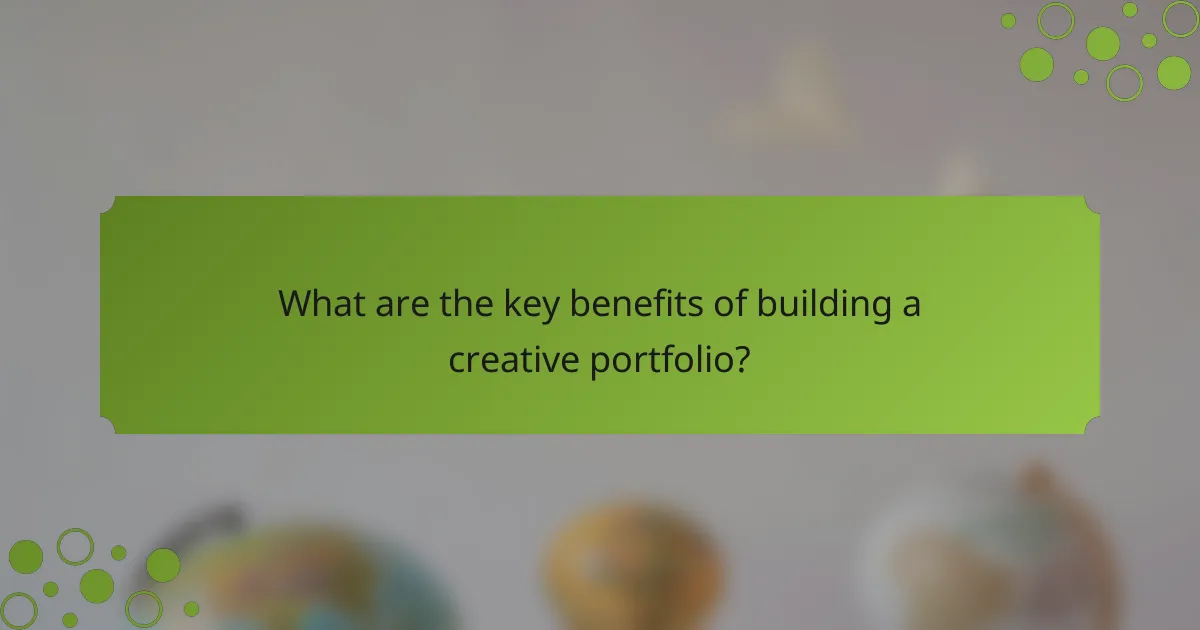
What are the key benefits of building a creative portfolio?
Building a creative portfolio offers numerous advantages, including the ability to showcase your artistic skills and document your growth as an artist. A well-crafted portfolio can significantly enhance your visibility to potential employers and clients, making it a vital tool in your creative career.
Showcasing skills to potential employers
A creative portfolio serves as a visual resume, allowing you to present your best work to potential employers. It highlights your unique style, technical abilities, and the range of projects you’ve completed, making it easier for hiring managers to assess your fit for a role.
When creating your portfolio, focus on quality over quantity. Select pieces that best represent your skills and align with the type of work you want to pursue. Including a variety of projects, such as illustrations, photography, or design work, can demonstrate versatility and adaptability.
Documenting artistic growth over time
A portfolio is not just a collection of completed works; it also serves as a record of your artistic development. By regularly updating your portfolio with new projects, you can visually track your progress and evolution as an artist.
Consider organizing your portfolio chronologically or thematically to showcase how your style and techniques have changed. This can provide valuable insights into your creative journey and help you identify areas for further improvement or exploration.
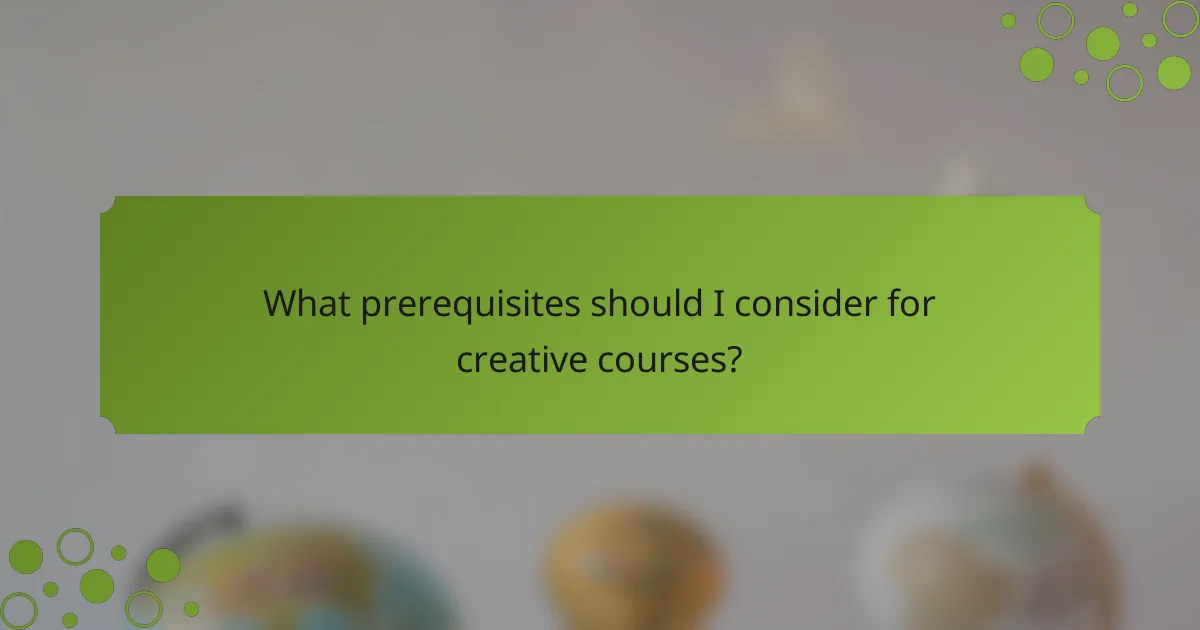
What prerequisites should I consider for creative courses?
Before enrolling in creative courses, consider your foundational knowledge of art principles and the availability of tools and materials. These prerequisites can significantly enhance your learning experience and project outcomes.
Basic understanding of art principles
A basic understanding of art principles, such as color theory, composition, and perspective, is essential for success in creative courses. Familiarity with these concepts allows you to make informed decisions about your artistic choices and enhances your ability to critique your work and that of others.
Consider taking introductory courses or workshops that cover these principles. Engaging with online resources or art books can also help solidify your understanding. This foundational knowledge will serve as a springboard for more advanced techniques and styles.
Access to necessary tools and materials
Having access to the right tools and materials is crucial for practical application in creative courses. Depending on the course focus, this may include paints, brushes, sketchbooks, or digital software. Ensure you have the basic supplies before starting to avoid interruptions in your learning process.
Make a checklist of essential items based on your course syllabus or instructor recommendations. If you’re on a budget, consider sourcing materials from local art supply stores or online marketplaces that offer competitive prices. Prioritize quality over quantity to maximize your creative output.
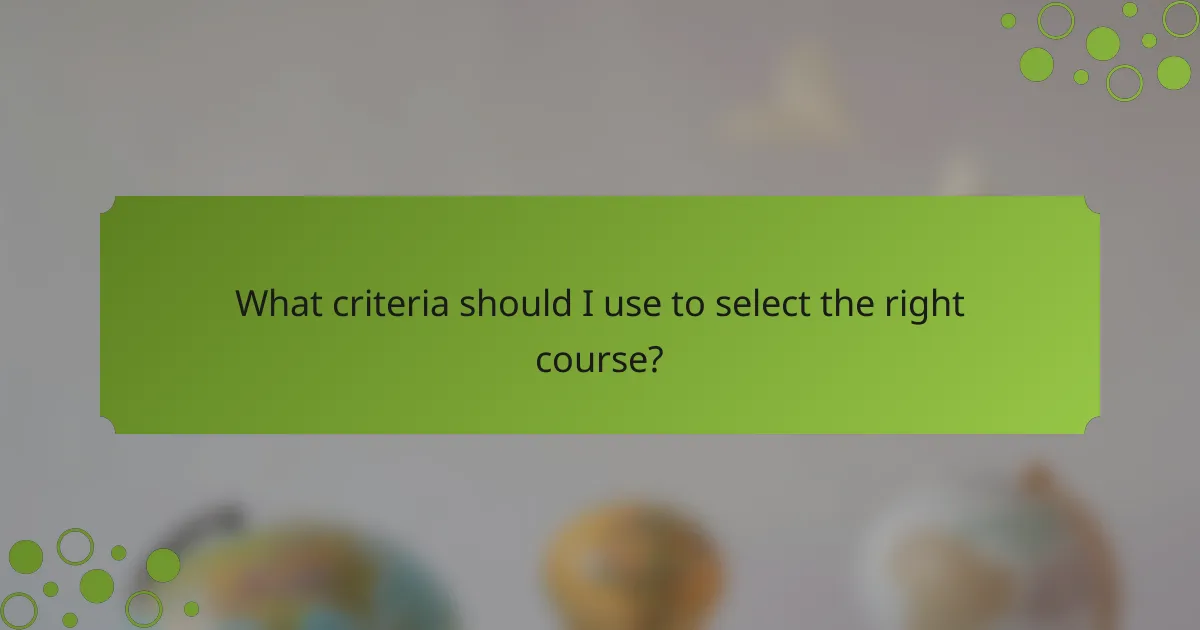
What criteria should I use to select the right course?
To select the right creative course, focus on the instructor’s qualifications, course reviews, and the overall learning experience. These factors will help ensure that the course aligns with your artistic goals and provides valuable project-based learning opportunities.
Instructor qualifications and experience
When evaluating an instructor, consider their educational background, professional experience, and artistic achievements. Look for instructors who have a strong portfolio and relevant teaching experience in artistic expression and project-based learning.
Additionally, instructors who actively engage in the art community or have industry connections can provide valuable insights and networking opportunities. Check if they have exhibited their work or received any awards, as this can indicate their expertise.
Course reviews and student feedback
Course reviews and student feedback are essential for understanding the quality of the learning experience. Look for testimonials that highlight the effectiveness of the course structure, the instructor’s teaching style, and the overall satisfaction of past students.
Consider platforms that aggregate reviews, such as educational websites or social media groups, to get a broader perspective. Pay attention to comments about the course’s project-based approach and how well it prepares students for building a portfolio.
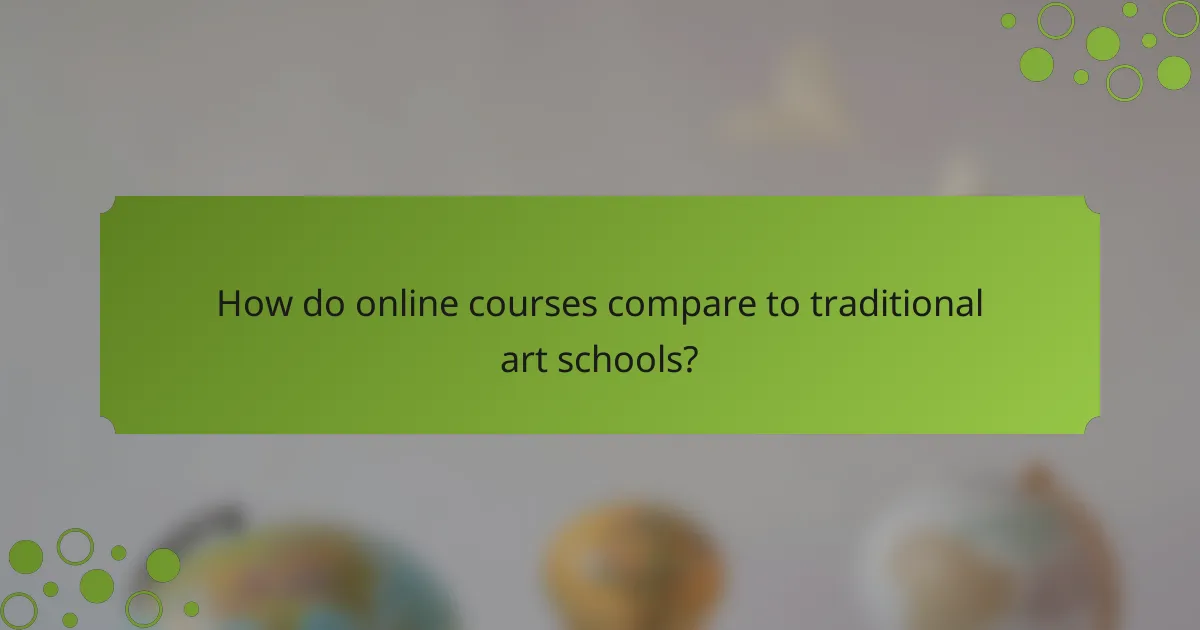
How do online courses compare to traditional art schools?
Online courses offer a more flexible and accessible alternative to traditional art schools, allowing students to learn at their own pace and often at a lower cost. While traditional institutions provide structured environments and networking opportunities, online platforms cater to diverse learning styles and schedules.
Flexibility and self-paced learning
Online courses excel in flexibility, enabling students to choose when and where they study. This self-paced learning approach allows individuals to balance their education with work or personal commitments, making it easier to fit artistic development into busy lives.
Many online platforms offer a variety of course formats, including video lectures, interactive assignments, and community forums. This variety supports different learning preferences, allowing students to engage with material in ways that resonate with them.
Cost-effectiveness of online options
Online art courses are generally more cost-effective than traditional art schools, with tuition fees often significantly lower. Students can save on additional costs such as commuting, housing, and materials, which can add up quickly in a traditional setting.
For example, while a traditional art school may charge thousands of dollars per semester, many online courses are available for a few hundred dollars or even less. This affordability opens up opportunities for a broader range of students to pursue their artistic passions without incurring substantial debt.
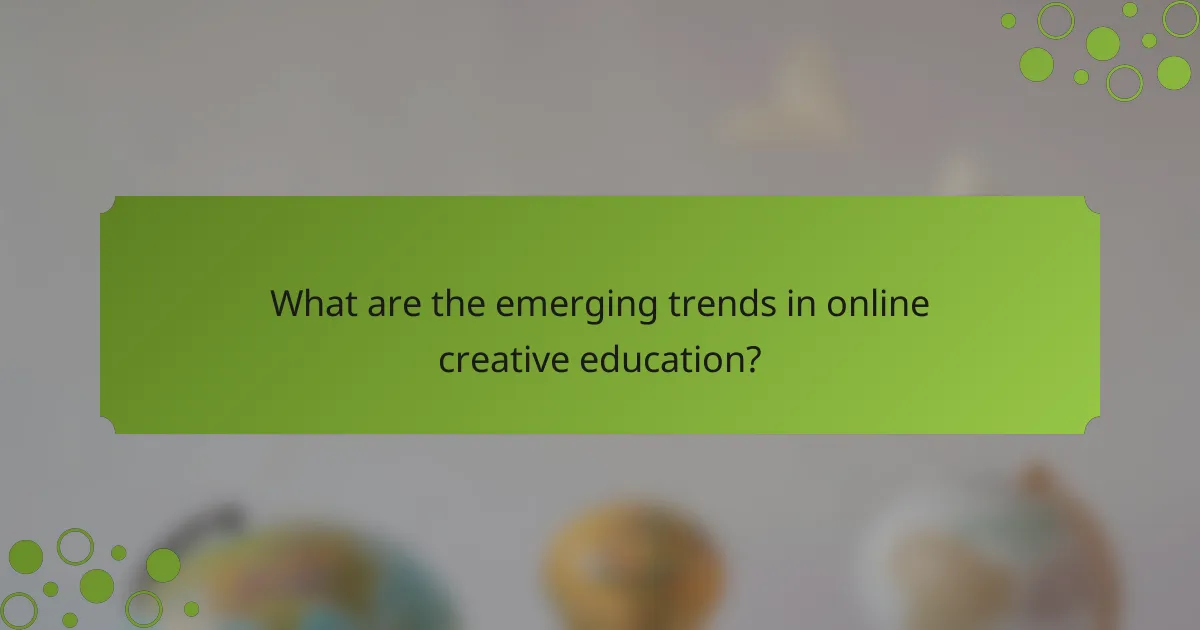
What are the emerging trends in online creative education?
Emerging trends in online creative education include the integration of advanced technologies and a growing emphasis on digital mediums. These trends reflect the evolving landscape of artistic expression, where learners are increasingly engaging with interactive and technology-driven platforms.
Integration of virtual reality in courses
The integration of virtual reality (VR) in creative courses allows students to immerse themselves in a 3D environment, enhancing their artistic experience. This technology enables learners to experiment with spatial design and interactive storytelling in ways that traditional methods cannot offer.
For example, VR can be used in architecture courses to visualize buildings in real-time or in fine arts to create virtual galleries. Institutions should consider the cost of VR equipment and software, which can vary widely, typically ranging from a few hundred to several thousand dollars, depending on the quality and capabilities.
Focus on digital art and design
There is a significant focus on digital art and design within online creative education, reflecting the demand for skills in graphic design, animation, and multimedia production. Courses often cover software tools like Adobe Creative Suite, Blender, and Procreate, which are essential for modern artists.
Students should be aware of the importance of building a strong portfolio that showcases their digital work. This portfolio can include a variety of projects, from illustrations to animations, and should be updated regularly to reflect their evolving skills and style. Engaging in project-based learning can help students create tangible outcomes that enhance their portfolios.
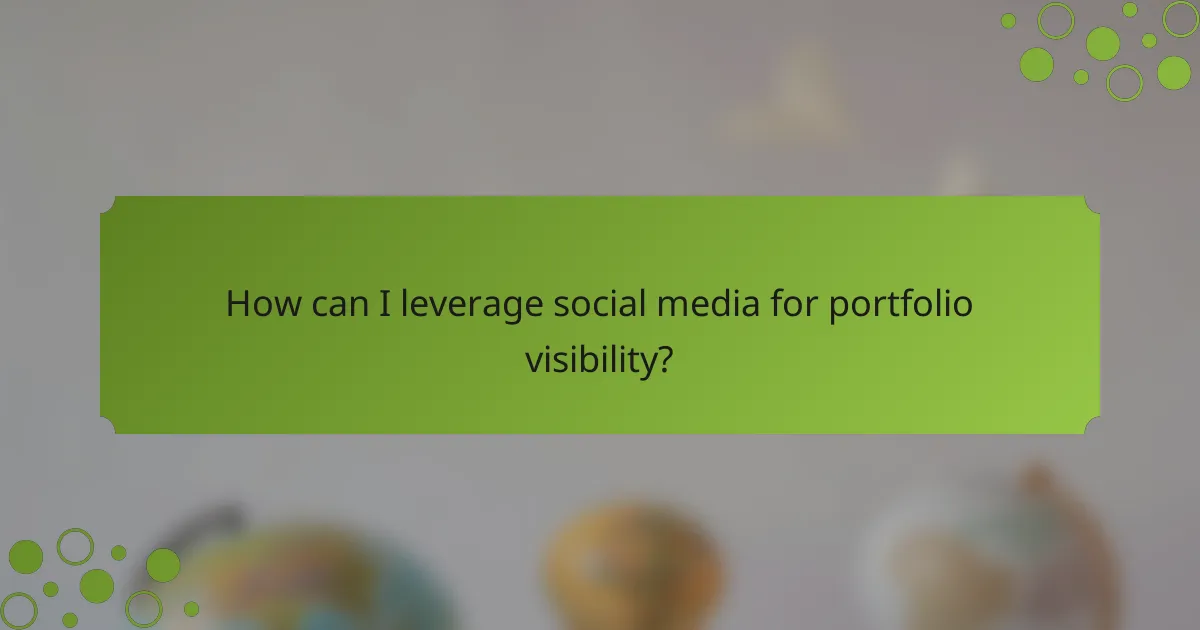
How can I leverage social media for portfolio visibility?
Leveraging social media for portfolio visibility involves strategically sharing your work to reach a wider audience. By utilizing platforms like Instagram, LinkedIn, and Pinterest, you can showcase your artistic expression and project-based learning effectively.
Choosing the Right Platforms
Selecting the appropriate social media platforms is crucial for maximizing your portfolio’s visibility. For visual artists, Instagram and Pinterest are ideal due to their image-centric nature, while LinkedIn can be beneficial for connecting with industry professionals.
Consider your target audience when choosing platforms. If you’re aiming for a younger demographic, platforms like TikTok may also be worth exploring. Each platform has its unique features, so tailor your content accordingly.
Creating Engaging Content
Engaging content is key to attracting attention on social media. Use high-quality images and videos to showcase your projects, and consider incorporating behind-the-scenes content to provide insight into your creative process.
Utilize storytelling techniques to connect emotionally with your audience. Share the inspiration behind your work or the challenges you faced during a project, as this can foster a deeper connection with viewers.
Building a Consistent Brand
Establishing a consistent brand across your social media profiles enhances recognition and trust. Use a cohesive color palette, typography, and tone of voice that reflects your artistic style.
Regularly update your profiles with new content and engage with your audience through comments and messages. This interaction not only builds community but also encourages followers to share your work, increasing visibility.
Utilizing Hashtags and Keywords
Effective use of hashtags and keywords can significantly boost your portfolio’s visibility on social media. Research popular and relevant hashtags in your niche to increase the chances of your posts being discovered.
Aim for a mix of broad and niche hashtags to reach different audiences. For example, if you’re a painter, use tags like #Art, #Painting, and more specific ones like #AcrylicArt or #ContemporaryArtists.
Engaging with the Community
Engaging with the social media community can enhance your portfolio’s visibility. Follow other artists, comment on their work, and participate in relevant discussions to build relationships.
Consider collaborating with other creators or participating in online challenges to expand your reach. These interactions can lead to new followers and opportunities to showcase your work to a broader audience.
